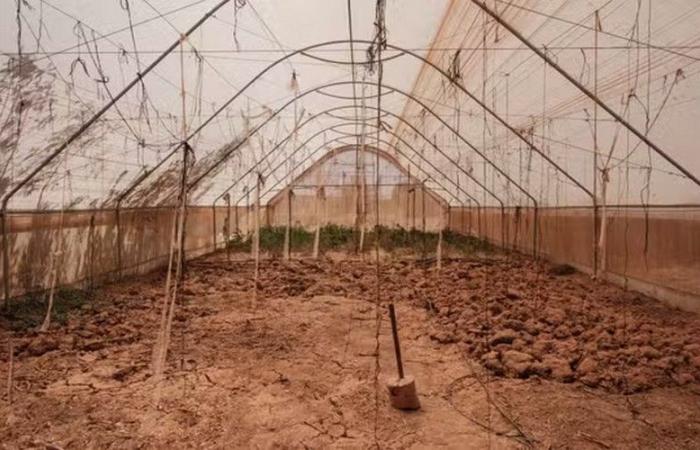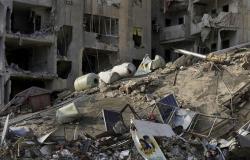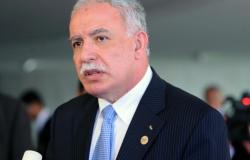
The executive secretary of the United Nations Convention to Combat Desertification explains, in an interview with Le Monde, the need for an emergency plan against droughts in the run-up to COP16 in Riyadh, which is takes place from December 2 to 13, 2024.
Ibrahim Thiaw would not have disdained a more supportive atmosphere. After the disappointing conferences in Cali (Colombia) on biodiversity in October, then in Baku (Azerbaijan) on the climate in November, the third UN convention resulting from the Rio summit in 1992 meets from December 2 to 13 in Riyadh ( Saudi Arabia) with the same objective of finding financing. This time to help the most vulnerable countries prepare for droughts and address land degradation.
What is the main cause of land degradation in Africa?
In Africa as elsewhere, agriculture and the deforestation it causes is the primary cause of land impoverishment. The destruction of grasslands to expand cultivated areas – in a context of strong population growth – also contributes to this. The emergence of a middle class is changing eating habits and giving rise to new needs. Land degradation is occurring at an unprecedented speed in Africa and the rest of the world while climate change increases pressure on natural spaces.
Which regions of the continent are most affected?
No region is spared. Even central Africa, with its hot and humid climate, is affected. Obviously, the further we move away from the equatorial belt, the more vulnerability increases. Rivers are experiencing increasingly frequent drying periods and it is no longer rare for dunes to form and obstruct flow, leading to more land loss or even transforming regions into zones. inaccessible.
In countries such as Mauritania, Mali, Niger, Nigeria and Senegal, major river basins are becoming silted up and natural vegetation, such as riparian acacia forests, is being submerged. Erosion contributes to displacing the seed capital of the soil and uprooting herbaceous and woody species.
This situation has consequences on the areas of land still available, of which Africa is said to be the largest reservoir. I don’t know if this is still true. The continent is losing its natural capital while the population still depends mainly on nature to live. It is shocking to see that countries which were agricultural export zones are now subject to food aid. Zimbabwe was forced to slaughter elephants to feed its population.
What do you expect from the Riyadh conference?
Our objective is to move towards the creation of a drought response framework that allows States to anticipate and prepare populations. Alert systems like those already used by the countries united in the Interstate Committee to Combat Drought in the Sahel, for example, make it possible to have six-month forecasts. It is also important that these States have seeds adapted to climate change.
The poorest countries can lose up to 10% of GDP during drought episodes, not to mention the consequences on food insecurity. Their populations are not covered by any insurance system. The project we worked on meets all of these aspects. We calculated that $6.4 billion [6 milliards d’euros] over ten years are needed to support the eighty poorest or middle-income countries, according to the World Bank classification. Forty-five are African. Saudi Arabia, as the host country of the convention, will take the lead in this initiative with other countries in the region. Financial contributions will be on a voluntary basis.
The Great Green Wall, by proposing to revegetate a strip 7,800 kilometers long and 15 kilometers deep, was supposed to provide a response on the scale of the Sahel. Is the initiative progressing?
The initiative is moving more slowly than we would like and this is primarily for institutional reasons. There are weaknesses at the level of certain States and the Pan-African Coordination Agency. There is no lack of political will. I do not know of an agricultural development project throughout the world which covers such a vast territory – from Senegal to Djibouti – and for which heads of state meet regularly.
Nor can we blame the lack of technical experts or the lack of money, but funding promises can only materialize if there is a strong institutional structure and capacity to absorb funds. Billions of dollars have been promised by foreign donors but each has its own disbursement rules and requirements. Faced with this, countries like Djibouti or Mali do not have the capacity to respond.
Apart from Senegal, always cited as an example, which other countries have managed to carry out large-scale reforestation and land restoration programs?
Several countries have made significant progress, particularly Ethiopia, Niger and Nigeria. This project creates emulation. Southern Africa is building its Great Green Wall. These countries have more resources and stronger institutions. The influence goes beyond the continent since a project financed by Saudi Arabia and which will go from the greater Middle East to the Maghreb is on track.
It remains important to connect the restored corridors between countries but we must also admit that the route of the Great Wall, as it was designed, was artificial and in places responded more to political considerations – to satisfy an elected official or a dignitary – only for environmental justifications. This is being fixed.
With The World





